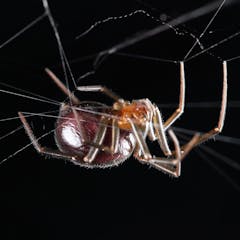
Articles on Nature
Displaying 161 - 180 of 261 articles

Images of wildfires are powerful, but can make climate catastrophe seem like something spectacular and distant. So some artists are focusing on the plants and bugs in our immediate surroundings.

How gardening can make you happier and healthier.

The values of a national park, translated to an urban context, to make life better for local people.

For people who aren’t able to spend time in nature every day, exposure to virtual natural environments could be an effective way of improving psychological well-being.

New research tracked 20,000 people to figure out the ideal ‘weekly dose’ of nature.

What do earthquakes, wealthy Italian families and your circulatory system have in common? Scientists use fractals, self-similarity and power laws to translate from local to global scales.

Why does the impact of rain in a puddle look different from when it falls elsewhere, like in a lake or the ocean? A ‘puddle equation’ dives deep into the secret math of ripples.

The current system drives social injustice and environmental destruction, a new approach to address both is called for.

In a growing world with an increasing population with ever-greater needs, it is high time to find a balanced solution for our activities. Nature provides us with the template.

Summer camps – long the stuff of American lore – can teach kids important life lessons as they have some fun along the way. Two experts on summer camp offer insight into what those lessons are.

Many people associate Henry David Thoreau with solitude in the outdoors. But Thoreau understood in the mid-1800s that there was no such thing as nature separate from humans.

Approximately 50% of the UK’s poorest people live over 15 miles from a national park and most people require transport to get to them.

Our fear of spiders is driven by a lack of information, but these fascinating creatures are often more harmless than harmful.

When species are threatened, we lose more than just biodiversity.

When I was little, geologists worked out Earth’s surface was made of pieces, like a giant puzzle. Those pieces, called “tectonic plates”, move and bump into each other and mountains form.

Valuing nature is hardly natural.

Moves to connect people with nature for both the conservation and health benefits point to the need for people to experience nature as they find it in the city, rather than only out in natural areas.

If animals are dying from a human-induced threat, then surely we have a responsibility to help them.

It can actually be very tricky to define a species, but in the 1900s, scientists found a pretty good way.

The Pilgrims repeatedly thanked God for their good fortune. But without two earlier developments, the entire undertaking at New Plymouth would have likely failed.
